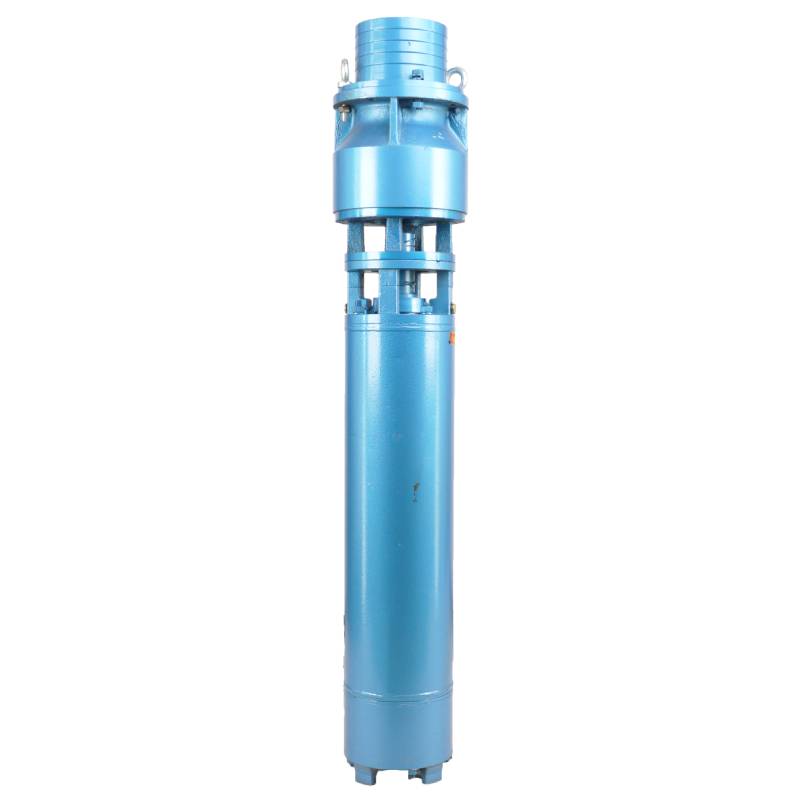Aug . 14, 2024 06:16 Back to list
High Capacity Submersible Water Pumps for Efficient Water Management in Various Applications
The Importance of Large Submersible Water Pumps in Modern Infrastructure
Large submersible water pumps play a pivotal role in various sectors, including agriculture, construction, municipal water systems, and industrial applications. These engineered devices are designed to operate underwater, efficiently transferring large volumes of water from one location to another. Their unique construction and functionality offer numerous advantages, making them essential for effective water management and infrastructure development.
One of the primary uses of large submersible water pumps is in agriculture, where they are vital for irrigation systems. Farmers rely on these pumps to draw water from deep wells or nearby rivers to irrigate crops. The efficiency of submersible pumps ensures a continuous supply of water, which is crucial for maximizing agricultural productivity. Unlike traditional surface pumps, which can lose suction and require priming, submersible pumps can operate at various depths and maintain a consistent flow rate regardless of external conditions. This capability makes them particularly advantageous in regions with fluctuating water levels.
In the construction industry, large submersible pumps are indispensable for dewatering applications. Construction sites often face challenges related to groundwater accumulation, which can impede progress and affect structural integrity. Submersible pumps are deployed to remove excess water, allowing construction activities to proceed without interruption. Their compact design enables them to fit into confined spaces, making them ideal for urban environments where traditional pumping solutions may not be feasible.
large submersible water pump

Municipal water systems also benefit significantly from the use of large submersible pumps. These pumps are employed in water treatment facilities and sewage systems to enhance the efficiency of water distribution and wastewater management. By facilitating the movement of water through treatment plants and into distribution networks, submersible pumps help ensure that communities receive clean and safe water. Additionally, they play a crucial role in managing stormwater runoff during heavy rainfall, reducing the risk of flooding and protecting urban infrastructure.
Another critical application of large submersible water pumps is in the industrial sector. Industries such as mining, manufacturing, and power generation require reliable water supply systems for cooling, processing, and other operational needs. Submersible pumps are capable of handling abrasive materials and high-temperature liquids, making them suitable for diverse industrial environments. Their durability and robust construction ensure long operational life, reducing maintenance costs and downtime.
Moreover, technological advancements in pump design have resulted in more energy-efficient models, which help reduce operational costs for businesses and municipalities. Many modern submersible pumps are equipped with variable frequency drives (VFDs), allowing for precise control of flow rates. This not only optimizes performance but also enhances energy savings, aligning with global sustainability efforts.
In conclusion, large submersible water pumps are integral to the efficient management of water resources across various sectors. Their versatility, reliability, and efficiency make them indispensable tools for farmers, construction companies, municipalities, and industries alike. As global water demands continue to rise and environmental challenges become more pronounced, the role of these pumps in infrastructure development and resource management will only increase in significance. Investing in advanced pumping technology ensures a sustainable future for water use, ultimately benefiting society as a whole.
-
Submersible Water Pump: The Efficient 'Power Pioneer' of the Underwater World
NewsJul.01,2025
-
Submersible Pond Pump: The Hidden Guardian of Water Landscape Ecology
NewsJul.01,2025
-
Stainless Well Pump: A Reliable and Durable Pumping Main Force
NewsJul.01,2025
-
Stainless Steel Submersible Pump: An Efficient and Versatile Tool for Underwater Operations
NewsJul.01,2025
-
Deep Well Submersible Pump: An Efficient 'Sucker' of Groundwater Sources
NewsJul.01,2025
-
Deep Water Well Pump: An Efficient 'Sucker' of Groundwater Sources
NewsJul.01,2025
-
 Submersible Water Pump: The Efficient 'Power Pioneer' of the Underwater WorldIn the field of hydraulic equipment, the Submersible Water Pump has become the core equipment for underwater operations and water resource transportation due to its unique design and excellent performance.Detail
Submersible Water Pump: The Efficient 'Power Pioneer' of the Underwater WorldIn the field of hydraulic equipment, the Submersible Water Pump has become the core equipment for underwater operations and water resource transportation due to its unique design and excellent performance.Detail -
 Submersible Pond Pump: The Hidden Guardian of Water Landscape EcologyIn courtyard landscapes, ecological ponds, and even small-scale water conservancy projects, there is a silent yet indispensable equipment - the Submersible Pond Pump.Detail
Submersible Pond Pump: The Hidden Guardian of Water Landscape EcologyIn courtyard landscapes, ecological ponds, and even small-scale water conservancy projects, there is a silent yet indispensable equipment - the Submersible Pond Pump.Detail -
 Stainless Well Pump: A Reliable and Durable Pumping Main ForceIn the field of water resource transportation, Stainless Well Pump has become the core equipment for various pumping scenarios with its excellent performance and reliable quality.Detail
Stainless Well Pump: A Reliable and Durable Pumping Main ForceIn the field of water resource transportation, Stainless Well Pump has become the core equipment for various pumping scenarios with its excellent performance and reliable quality.Detail
